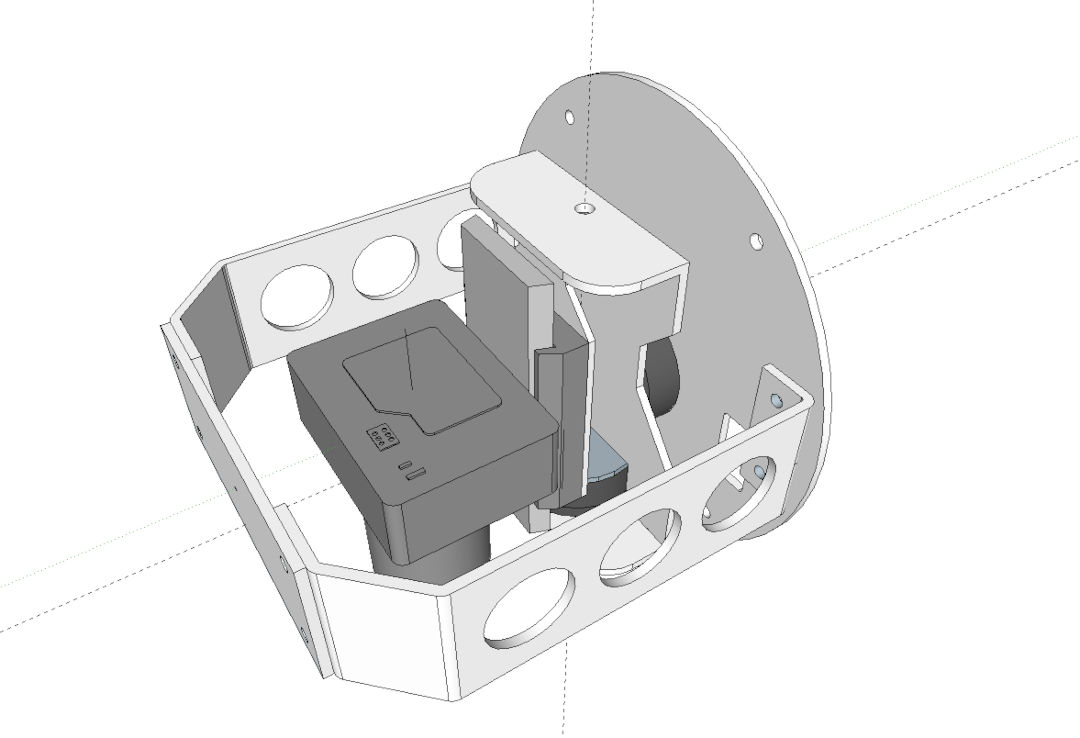Sensors & Systems
Mapping
The primary use for pods is to generate orthophoto and line mapping, and for this purpose a single downward facing DSLR or industrial camera is the starting point. Such a system is simple to use, flight planning is straightforward and there are numerous well supported software packages for processing the results.
The picture is of a Phase One camera mounted on a Manfrotto slide for easy removal and a VectorNav GPS/IMU.
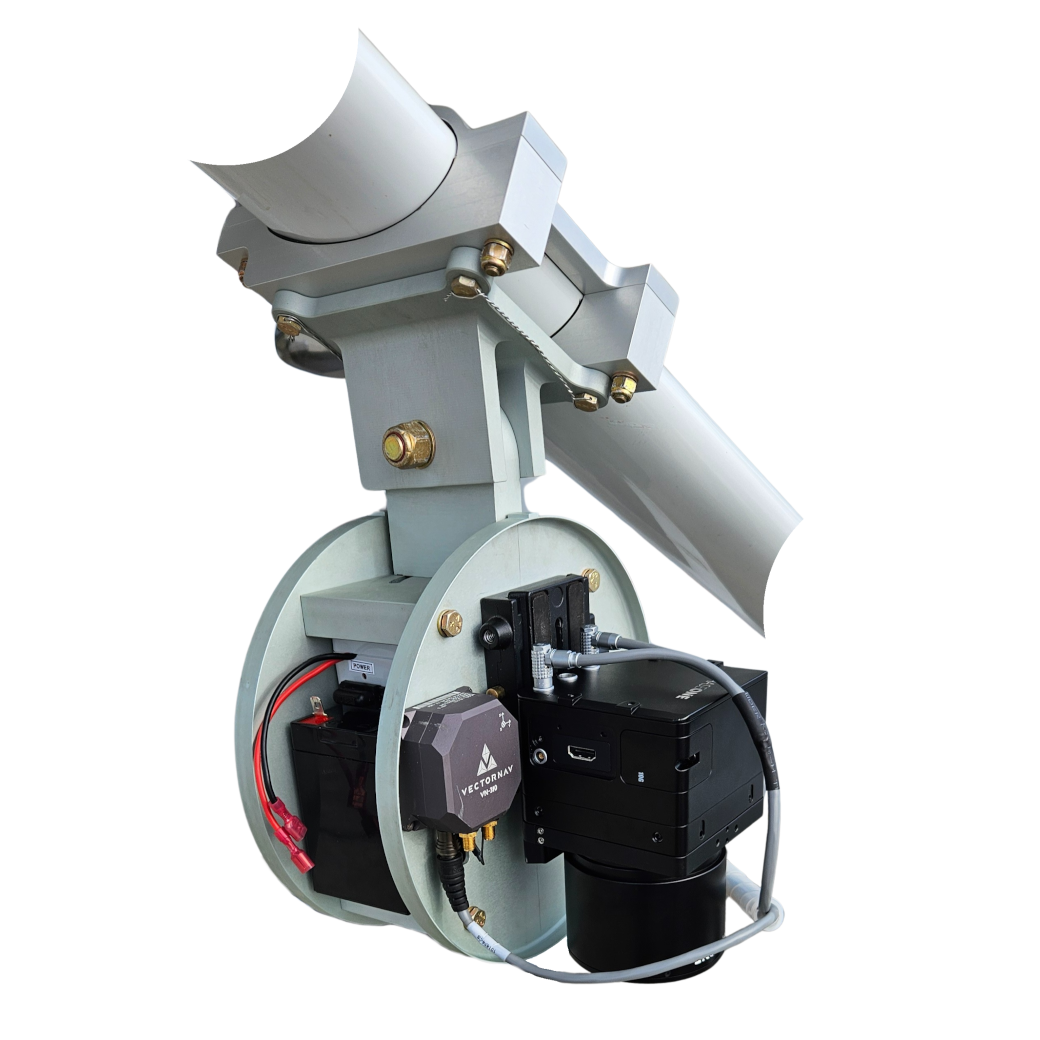
Multiple Cameras
More elaborate systems incorporating multiple cameras are frequently fitted. Commonly these consist of one RGB and the one IR camera or two angled cameras to give a wider field of view. More complex arrangements are not unusual.
The picture shows a three camera game counting setup with two sideways facing and one forward facing camera delivering 3cm pixels at the ideal 30 degree viewing angle across a 1km swath width from a 500m flying height.
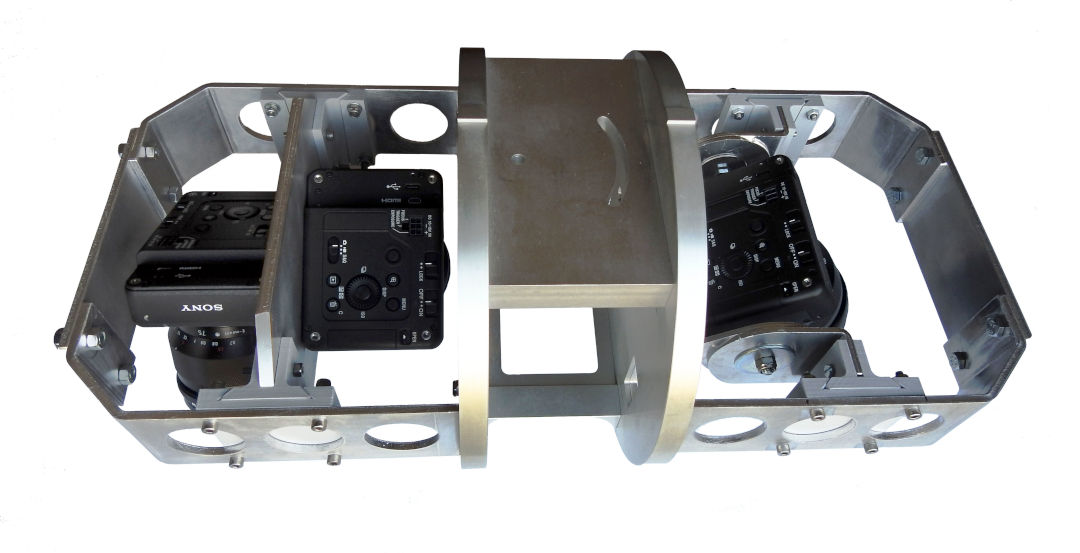
Lidar
Two systems are available. A Geolas Elmap-P or a Riegl VUX-160. The Elmap-P has a 2100m effective range with a 1600kHz pulse rate and is suited to large area coverage. The VUX160 has a 250m range at 1600kHz but can go up to 2400kHz so is suitable for small sites requiring high point densities.
Full specifications and details can be downloaded from the respective manufacturers web sites. Other lidars have been fitted by some clients.
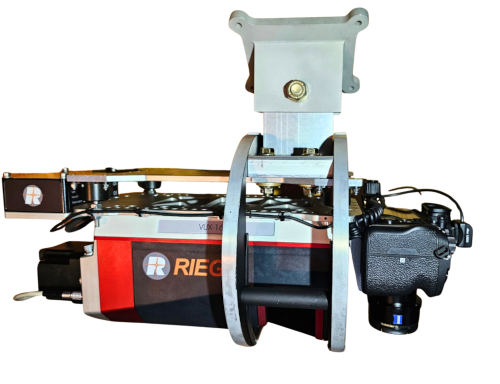
Swing Mount
This is a servo driven mount which enables a single camera to capture multiple frames across track by rotating it in a cyclical sequence, stopping at predetermined angles of the users choosing. Very wide swaths and/or high resolutions are attainable in this way.
The viability of such a system is limited by the rate at which the camera can consistently capture data so it is not always applicable. It is a good solution for increasing the GSD of video and thermal cameras.
Watch the swing mount in action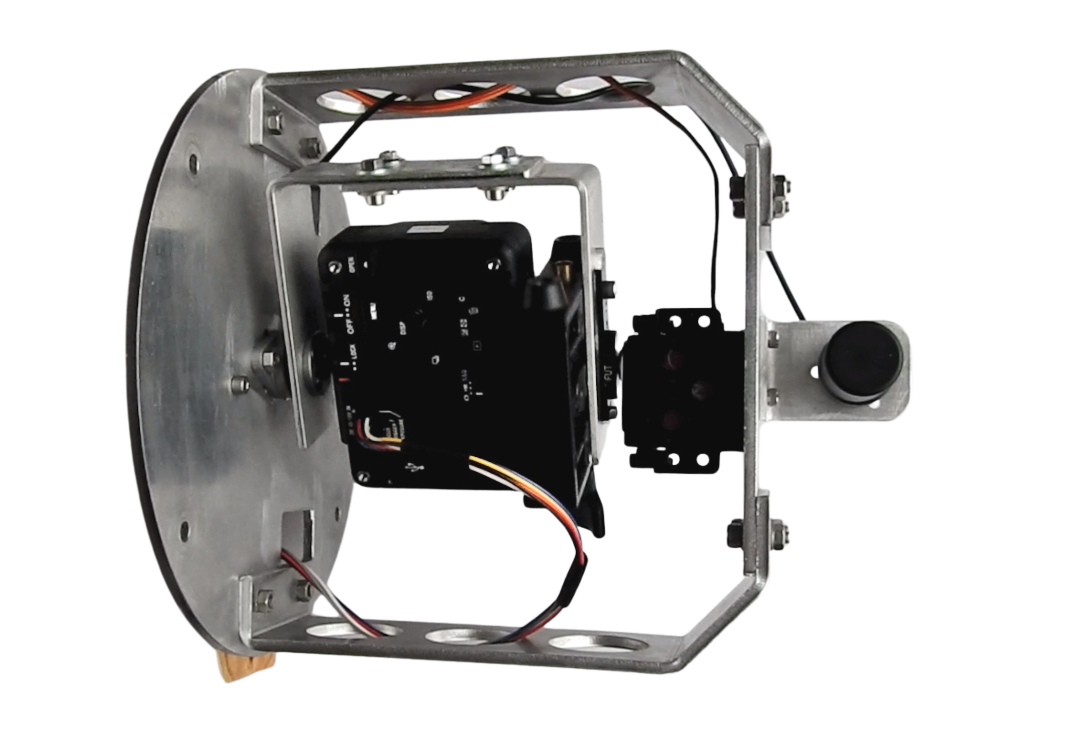
Gyro Mount
A two axis gyro mount will shortly be available. This stabilizes a single camera in the roll and yaw axes which are the most common problems. There is very rarely any significant movement in the tip axis.
For most normal conditions a gyro mount is not necessary but in high winds or extreme turbulence it can be useful, particularly in the case of oblique photography.
